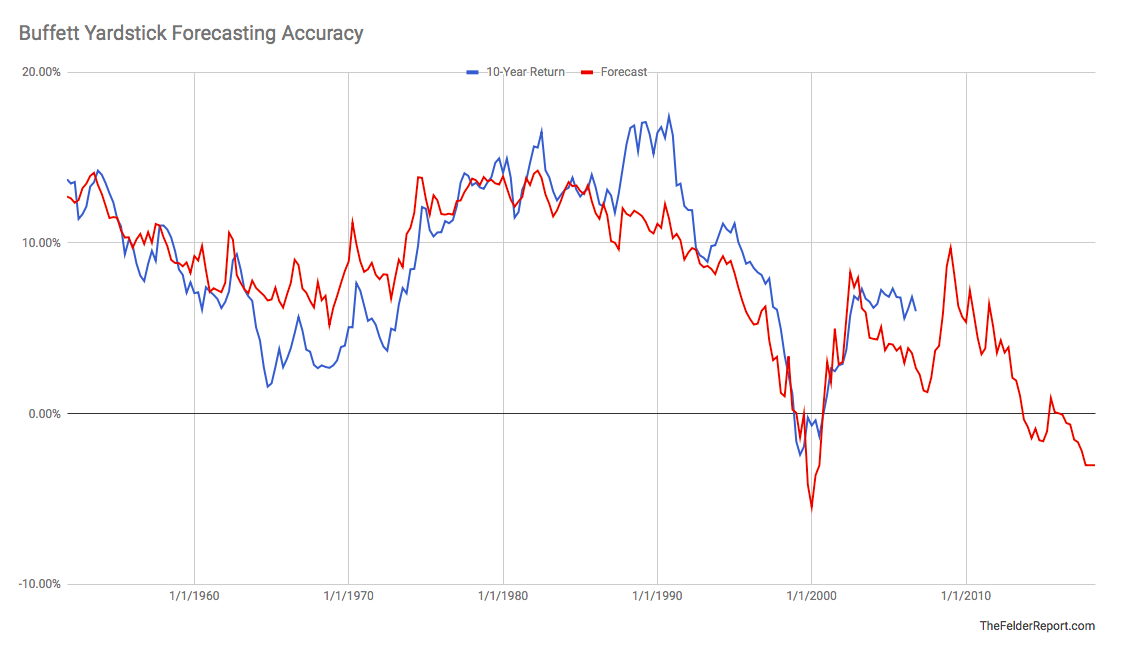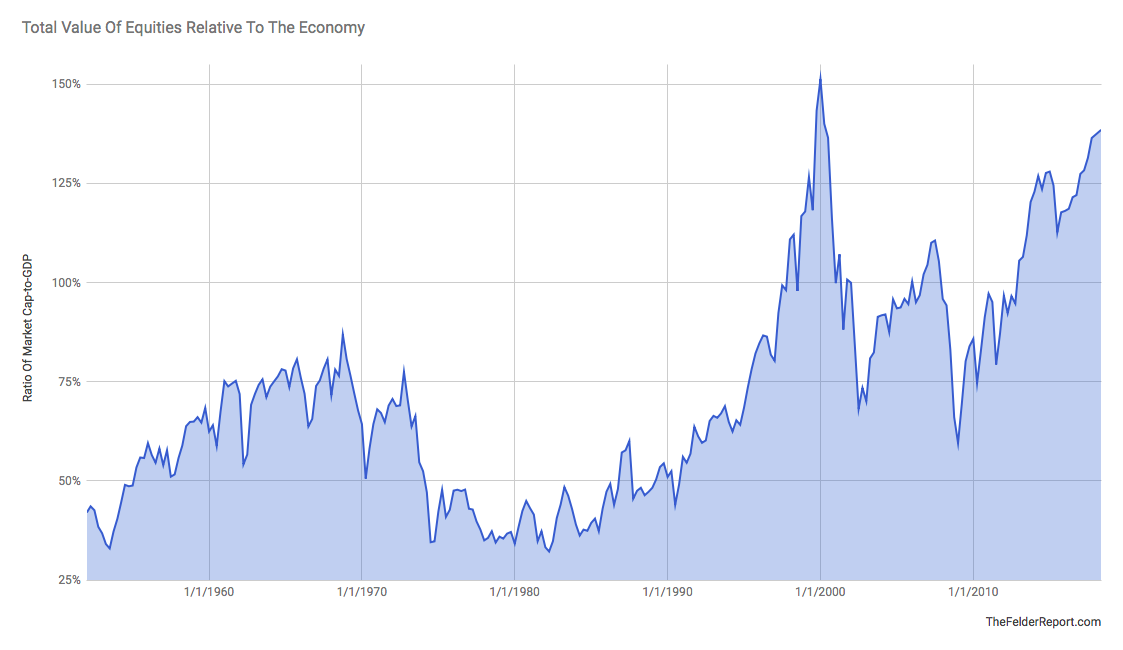The financial press loves to flog viewers with bullish quotations at all times, but especially from Warren Buffett, and especially near cycle tops when valuations are the least attractive for investment.
In recent years, I have written a few times about Why Buffett won’t warn that stocks are in a bubble. With more than $700 billion in assets under management, and positions too huge to move out of easily, Buffett’s fund has become synonymous with buy and hold, long-always stock holdings, that move up and down largely in lock step with the S&P 500.
Trouble is that since 1998 we have been moving through a secular bear market born of the highest valuations and worst investment return prospects in decades of market history. And valuations are the most definitive factor in determining future returns. Case in point, Berkshire Hathaway shares lost half of their market value in both of the last two bear markets along with the broad markets, and spent five+ years thereafter, just waiting to grow capital back to even.
The latest Berkshire’s shareholders’ annual meeting extravaganza held on May 5 attracted the usual media scrum with lots of hopeful hype about stock returns looking forward. The inconvenient truth however, is that on every metric, including Buffett’s self-named favorite valuation tool–being the total market capitalization of US stocks divided by US GDP (shown below since 1950)–stocks are screaming capital loss prospects, higher than in 2008 and nearly as high as the tech bubble top in 2000. See Jesse Felder’s article Buffett thinks bonds are a terrible investment, but stocks look even worse.
This suggests that at present levels, stocks are on track to make negative returns over the next decade including dividends (red line shown below). The actual 10-year historical returns that have been experienced from different valuation levels in this indicator have been remarkably correlated (as shown below in blue). But then, this time is surely different?




